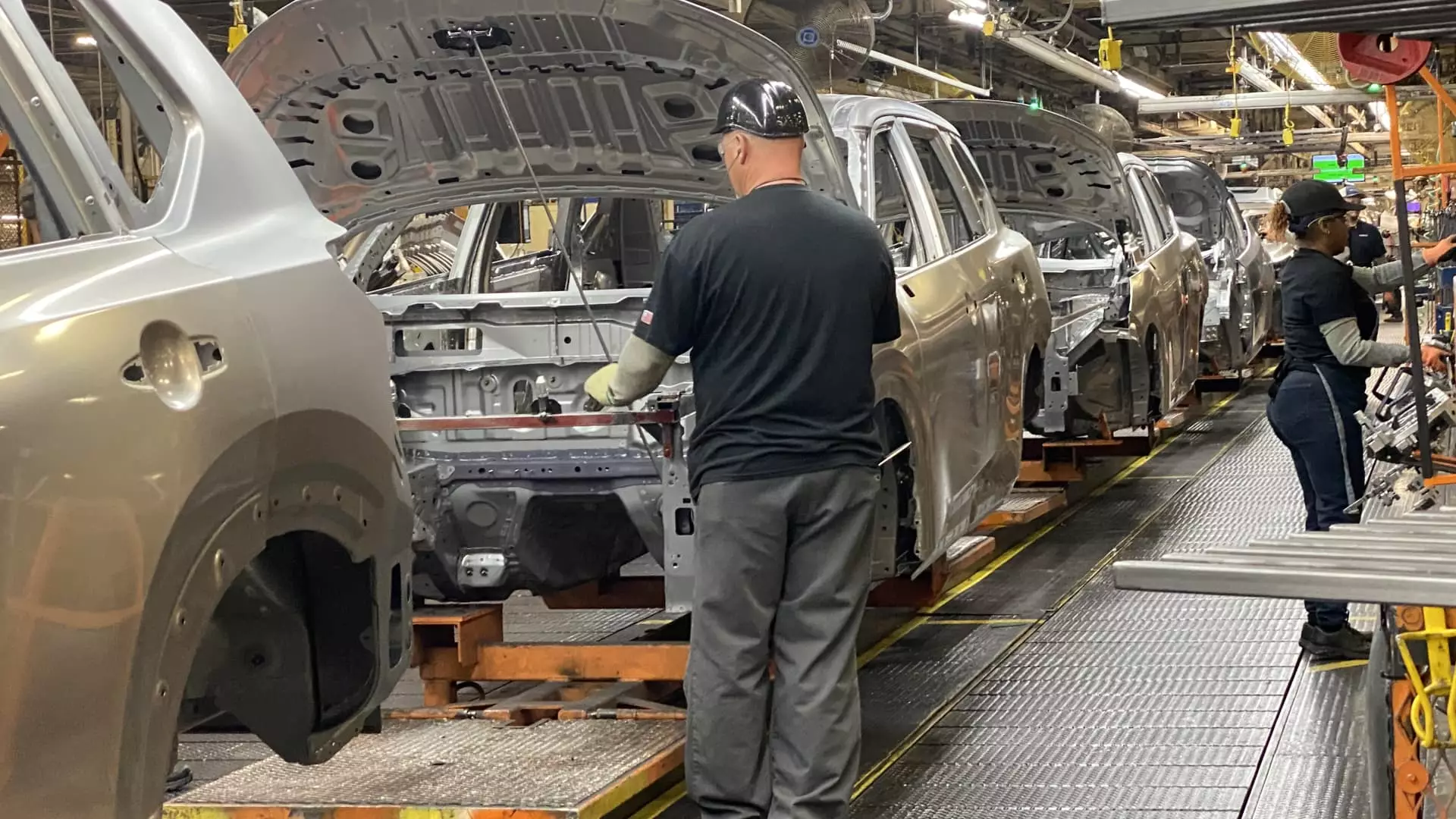The automotive industry is facing a crisis unlike any seen in decades, courtesy of former President Donald Trump’s sweeping 25% tariffs on imported vehicles. As these policies linger ominously over the industry, analysts are predicting far-reaching ramifications that extend well beyond sticker prices. According to a new report from the Boston Consulting Group, the ongoing tariff saga may usher in what they deem “the most consequential year for the auto industry in history,” and for good reason. The impending changes threaten not just immediate costs but also the very foundation of how automobiles are manufactured and sold.
The forecast is staggering: a projected drop in vehicle sales by the millions and a potential increase in production costs exceeding $100 billion annually. The Center for Automotive Research estimates that automakers in the U.S. alone will see costs soar by nearly $108 billion, an insurmountable pressure that raises questions about sustainability. As consumers grapple with rising vehicle prices, the ripple effects of the tariffs could threaten the livelihoods of many involved in the automotive supply chain.
The Consumer Dilemma: When Costs Rise, Choices Shrink
The impact on consumers is no less dramatic. The predicted increase in new vehicle net prices by $2,000 to $4,000 could serve as a straightjacket for both demand and affordability. For the average American, whose purchasing power is persistently eroded by inflation, the prospect of yet another expense could be the straw that breaks the camel’s back. This predicament is exacerbated by already exorbitant vehicle prices that have crept toward an average of nearly $50,000, a number that does not even account for financing costs.
With interest rates hovering near a decade high—more than 9.64% for new cars—families are being forced to juggle scarce resources while contemplating their next automobile investment. A situation that, as noted by auto analysts, could lead to a reduction of about 2 million cars sold each year in the U.S. and Canada combined. The implications are profound. Fewer cars sold translates to reduced revenues for manufacturers and suppliers, many of whom are already struggling under the weight of increased operational costs.
The Economic Ripple Effect
Economically, the consequences of shrinking vehicle sales are poised to send shockwaves through the broader marketplace. The loss of millions of potential auto sales means more than just reduced manufacturer profits; it could lead to job losses in sectors tangentially reliant on the automotive industry, including parts suppliers, logistics companies, and dealerships. Mark Delaney of Goldman Sachs suggests that employment in the automotive sector could take a substantial hit as profitability diminishes amid rising manufacturing and operational costs.
The instability doesn’t just stop at job security; the relentless rise in vehicle costs combined with softened consumer demand can deteriorate consumer confidence—a critical component of economic health. Higher prices will inevitably limit spending power, leading to an attenuated cycle of economic activity across sectors. A couple million-unit drop in vehicle sales is more than just numbers on a page; it’s a potential precursor to broader economic distress.
The Musical Chairs of Auto Manufacturing
Automakers have portrayed a varied response to the tariffs, navigating the tumultuous waters with a mixture of price promotions and strategic shifts. Domestic manufacturers like Ford and Stellantis are resorting to temporary pricing deals to keep their models enticing, while others, like Jaguar Land Rover, have halted shipments altogether. The strategies being employed reveal a certain desperation to maintain the status quo, even as the ground is shifting beneath their feet.
But the question remains—how long can these companies sustain their strategies in the face of relentless price pressures? Some market analysts expect a shake-up in production dynamics, urging manufacturers to rethink their supply chains and distribution practices entirely. As businesses scramble for solutions amidst chaos, the potential for innovation may emerge, albeit reluctantly.
The Inexorable Path Forward
Ultimately, the automotive industry is at a crossroads shaped by policies that could be considered more divisive than beneficial. The ripple effects of Trump’s tariffs present a formidable challenge, yet they also serve as a harsh reminder that policy decisions can fundamentally alter the fabric of industries reliant on global dynamics. As executives and consumers alike brace for the impending consequences, they can only hope that the necessary structural changes will lead to a more sustainable and resilient automotive future. But one has to wonder—at what cost? The unfolding narrative may be both a cautionary tale and a herald for change, compelling stakeholders to find a new equilibrium in a landscape fundamentally altered by tariffs.

